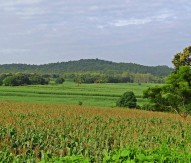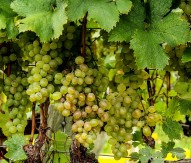
New gas phase compounds form organic particle ingredients
Scientists have made a step towards better understanding the relationship between vegetation and climate by detecting extremely low volatility organic compounds (ELVOCs) produced by plants.
These organic species contribute to the formation of aerosols that can affect climate and air quality. Forests emit large amounts of VOC. Their reaction products form the secondary organic aerosol. In this case, gases are converted into particles that reflect solar radiation or act as nuclei for cloud droplets.
Large uncertainties do primarily exist regarding the growth of newly formed particles towards cloud nuclei on which water condenses, thus initiating the formation of clouds. The particle growth in the diameter range between about three and 100 nanometres requires low-volatile organic vapours. These extremely ELVOCs have been hardly detected so far and their possible formation pathways are very speculative.
Until recently, these compounds could not be measured because of their short lifespans. As soon as these molecules collide with surfaces, they remain adsorbed and cannot be detected in the gas phase. To prevent this, the ELVOCs are directly ionised under atmospheric conditions in the gas phase and subsequently transported as an electrically charged ELVOC molecule into the sensor. This powerful analytical method using mass spectrometric detection is called CI-APi-TOF (chemical ionisation – atmospheric pressure interface time-of-flight mass spectrometry).
The study by scientists from Finland, Germany, the USA and Denmark consists of several parts. The field measurements were carried out in Hyytiäla in southern Finland, which is typical for boreal forests. The main part of the study comprises laboratory investigations performed in a reaction chamber at the Research Center Jülich. The Jülich Plant Atmosphere Chamber (JPAC) is a 1.5m3 glass chamber under controlled conditions.
“We have focused our efforts on the oxidation of α-pinene, because it accounts for about half of global monoterpene emissions,” explained the University of Helsinki’s Dr Mikael Ehn. “We managed to present the first molecular evidence of a direct and ubiquitous source of ELVOCs arising from the oxidation of monoterpenes and other volatile organic compounds in the gas phase.”
Vapour is produced with relatively large molecules containing many hydrogen atoms as well as approximately the same number of oxygen as carbon atoms. “The results suggest that about 10% of the reacting VOC mass is converted to secondary organic aerosol over the tree tops. Previous estimates were based on a share of less than 5%. This shows that the role of ozone (the oxidant of α-pinene and other monoterpenes) has been underestimated,” Ehn stated.
The research was part-funded by the European Research Council and the European Commission.






